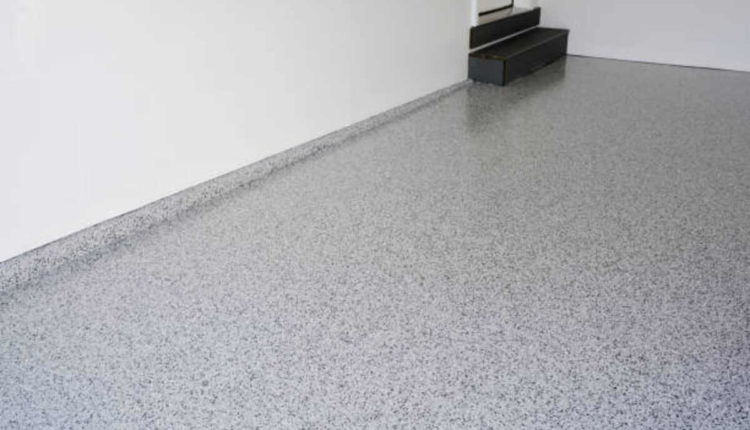Polyaspartic coatings were first developed in the 1990s. They are an aliphatic polyurea material that combines some of the benefits of epoxy and polyurethane coatings into one cohesive system. The actual Interesting Info about polyaspartic.
The main benefit of epoxy and urethane coatings is their fast curing time, which means less downtime between jobs. You’re back at work sooner with speedier work cycles.
They are a type of polyurea.
Creative Material Technologies formulates various polyurea coatings based on the same introductory chemistry (the reaction between isocyanate and polyamine). Still, each variety differs significantly in composition, gel and cure time, properties, and other considerations. Creative Material Technologies has tailored polyaspartic coatings across its business services portfolio for different applications.
Polyaspartic floor coatings are perfect for industrial environments where concrete is exposed to chemicals and abrasion and protects pipes and tanks from potential hazards. Their durable, water-repellent properties feature low VOC emissions with quick drying times and quick abrasion/impact damage resistance; they’re also resistant to cold temperatures and humidity.
Polyaspartic coatings come in two varieties, aliphatic and aromatic. Aliphatic polyureas are more expensive yet offer excellent UV and color stability than aromatic coatings. Scented base coats may not form strong surface bonds to raw concrete; nevertheless, they remain an appealing choice for applications such as tank coatings or process areas.
When choosing a contractor to apply your polyurea coating, ensure they have experience using this product. They should have all of the equipment necessary for prepping the substrate properly before application and testing its curing time – otherwise, cracks and delamination could occur!
They are a two-part system.
Polyaspartic floor coatings are eco-friendly and contain fewer volatile organic compounds (VOC) than epoxy coatings. This leads to smaller environmental footprints and reduced energy use during production, saving money and resources in the long run. Installing one also requires fewer chemicals and materials, which saves both money and resources in installation time.
Elastomeric coatings are stronger and more durable than epoxy epoxies. Their abrasion resistance is three times higher, they’re flexible enough to resist scratches more efficiently, and non-yellowing – plus, UV rays won’t have as much impact! Additionally, there are fewer issues related to yellowing with age than traditional epoxies do.
These coatings are easy to apply and dry quickly, eliminating the need for primer or surface treatment, and can be used in various temperatures. In addition, these permeable finishes do not trap moisture as traditional epoxy coatings do and allow airflow through freely for improved finish quality.
Polyaspartic coatings differ significantly from epoxy in that they typically take only 12-24 hours to cure completely, enabling light foot traffic to resume within 12 hours and helping businesses avoid revenue losses by not necessitating temporary closures in high-traffic areas.
Companies are turning to polyaspartic floor coatings due to their ease of application. Professionals can apply them quickly and efficiently without much downtime while it remains odorless and colorless – perfect for sensitive environments. Just beware of producers using mixtures of aliphatic isocyanates with aromatic isocyanates, which will provide less long-lasting durability than 100% aliphatic products.
They are fast-drying
Polyaspartic floor coatings dry quickly, even in high-traffic areas. They dry much faster than epoxy and urethane coatings – leading to less downtime and faster return to service. Plus, as they’re 100% solids, they don’t emit harsh fumes like epoxy and often produce no VOC emissions!
Due to their quick curing time and low VOC emissions, polyaspartic coatings are safe for your employees and customers to enter as soon as they finish working. Furthermore, they can even be applied over existing epoxy flooring – provided it has been sanded down and vacuumed before adding polyaspartic. Temperature stability must also be ensured; moisture vapor emissions should remain below 75% for best results.
Polyaspartic coating is applied similarly to epoxy systems, yet with lower viscosity for more accessible application using rollers or squeegees. Almost odorless and clear when dried within one hour or less – perfect for commercial applications that can’t afford downtime of any duration. Watch this time-lapse video of a floor prepped and coated with polyaspartic; its beautiful surface provides unparalleled abrasion resistance!
They are easy to apply.
Polyaspartic coatings require fewer coats than epoxy or urethane systems and cure quickly; most can handle foot traffic within an hour and vehicles within several hours post application, allowing your business to reopen immediately once the job has been completed – saving time and money!
Polyaspartics are odorless and have low viscosity, making them easy to work with. Their primer and bed coat can usually be mixed with pigment; however, the topcoat may remain colorless if desired. Each manufacturer recommends three coats as the minimum number; remember to backroll each layer using a notched squeegee before brushing out edges with a notched brush before rolling on the final topcoat with clear or colored decorative chips; all can be applied using a roller.
Polyaspartic floor coating systems are an excellent way to safeguard surfaces exposed to heavy equipment, particularly construction equipment and vehicles frequently facing harsh weather conditions. Construction vehicles, in particular, need protection from corrosion.
Polyaspartic coatings differ from epoxy systems in that they bond directly to concrete; however, for successful garage floor coatings, this process of texturing or etching must occur before applying any polyaspartic coats.
Read also: The Benefits of Clear Hurricane Shutters and How to Install Them Yourself
